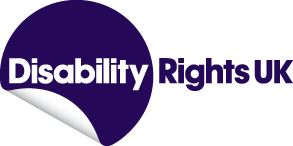Nearly Half of Families With A Disabled Child Living in Poverty
The measurement – which aims to provide a more accurate way of calculating deprivation – shows that nearly half of all individuals in families with at least one Disabled child and one Disabled adult in the UK were living in poverty by 2021-22, according to a new DWP progress report and consultation.
This report found that people living in families with Disabled children were more than twice as likely to be living in poverty than those in families where no-one was Disabled in 2021-22. Those in families with both a Disabled child and a Disabled adult were more than two-and-a-half times more likely to be living in poverty.
As the figures for 2022-23 are not yet available, there is no account taken of the impact of the subsequent cost-of-living crisis.
The individuals in low resources figures – known officially as a “below average resources” (BAR) measure – are being developed by DWP and are based on work by the Social Metrics Commission.
The commission’s own report calculated that, under the new measures, there were 14.9 million people living in poverty in the UK in 2021-22, of whom 8.6 million were living in families that included a Disabled adult or child, and 6.3 million in families that do not include a Disabled adult or child.
It also found that, of the 14.9 million people in poverty, 4.7 million of them were Disabled, with 3.2 million Disabled working-age adults, 600,000 Disabled children and 800,000 Disabled pension-age adults.
The aim of producing the new BAR figures is to provide a more accurate measure of poverty than the existing households below average income (HBAI) figures.
One of the reasons the BAR figures are likely to provide a more accurate measure of how many Disabled people are living in poverty is that they account for what is known as “inescapable disability-related costs” (IDC), which HBAI ignores.
This means that the new figures take into account for the first time the extra disability-related costs that Disabled people face, although DWP is continuing to develop this IDC figure to make it more accurate.
Among other improvements to HBAI, the BAR figures also take account for the first time of overcrowded households and childcare costs.
It means that the more accurate BAR measure “tends to find even higher poverty rates for the most disadvantaged… in comparison to HBAI”, such as families with children and those with a Disabled family member.
Ken Butler, DR UK’s Welfare Rights and Policy Adviser said: “While the DWP attempting to develop a more accurate measure of how many Disabled people are living in poverty is welcome it is decades overdue.
“That this pre-cost-of-living crisis draft measurement shows that 4.7 million of Disabled people were likely to be living in poverty is truly shocking. That level of depravation must be far worse now.
“What is bitterly ironic is that the BAR measure is not squarely aimed at increasing Disabled people’s benefits to relieve this extreme poverty.
“Instead, the Government intends to abolish the work capability assessment, that will see around 632,000 Disabled people worse off, with those who receive the universal credit support component losing around £4,700 a year *
“What’s needed instead is a benefits Essentials Guarantee that also accurately reflects “inescapable disability-related costs”.
A consultation on DWP’s ongoing BAR work will run until 11 April.
*The annual equivalent of the universal credit support component rate
Source and for further information see DWP’s ‘truly shocking’ disability poverty stats are ‘terrible indictment’ available from disabilitynewsservice.com.
See also our related news stories:
Health of Millions at risk as Universal Credit Falls So Far Short of the Cost of Essentials
